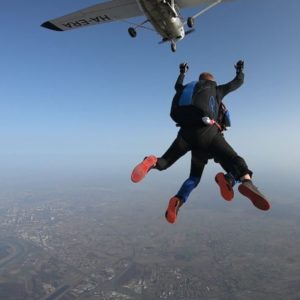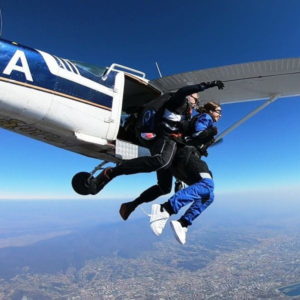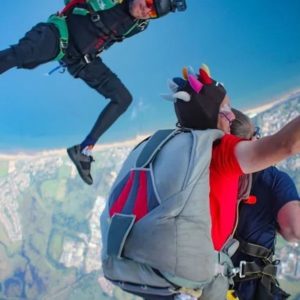No products in the cart.
Skydiving Experiences
Showing 1–16 of 64 results
Filters Sort results
Reset Apply
Tandem Skydive in Maribor - Slovenia, from 3000 meters (10,000 ft.). Skydive location: Airport Maribor, Slovenia Last Updated: 18-12-2023 | ||
Tandem Skydive in Čakovec - Croatia, from 4000 meters (13,000 ft.) (3-4 times per year). Skydive location: Airport Pribislavec, Čakovec, Croatia Last Updated: 18-12-2023 | ||
For the video & Stills package a professional skydiving videographer will capture the whole adventure jumping out with you & your instructor in freefall. Your skydive footage will be edited with music & title screens. Last Updated: 18-12-2023 | ||
Experience Skydiving at its best over one of the UK's most beautiful Islands. Skydive Isle of Wight is a fully accredited British Skydiving tandem skydive centre with highly trained instructors and a view you won't forget. Skydiving bookings now being taken for 14th, 15th & 16th June 2022, 9th, 10th & 11th August 2022. Last Updated: 18-12-2023 |
Skydiving Experiences on AvPay
AvPay has a range of Skydiving Experiences in the US, Europe, Australia, South Africa and throughout the world. Contact Dropzones directly on AvPay to compare prices through the Aviation Directories here: https://avpay.aero/directory/
Book your skydiving experience online with AvPay! Experience the thrill of tandem skydives, AFF (accelerated freefall), formation skydiving, free flying, swooping, static-line jumps and wing suiting. AvPay is a global aviation marketplace that lets you browse a wide selection of Skydiving Experiences. View all of our Parachute Experiences and discover other related Aviation Products & Services here: https://avpay.aero/marketplace/
Can’t find the Skydiving Experience you’re looking for? Check-out the Aviation Directories to find a Parachuting Club that offers the service you’re looking for: https://avpay.aero/directory/
AvPay: Connecting Skydivers with Skydiving Clubs Worldwide!
Static line parachuting and Advanced Fee Fall (AFF) are two different methods of training and executing parachute jumps. In static line parachuting, the training method involves a gradual progression where the student jumps from an aircraft while attached to a static line. The static line is a cord or strap that automatically deploys the parachute as the student exits the aircraft. With static line parachuting, the parachute is deployed automatically as the student exits the aircraft. The static line is attached to the aircraft, and as the student falls away, it pulls the parachute from the container, initiating the deployment process. In static line jumps, the student experiences a relatively stable and controlled descent. The parachute opens immediately upon exit, allowing for a slower descent to the ground. Static line jumps typically involve an instructor or jumpmaster stationed inside the aircraft who assists with the student’s exit and monitors their progress during the descent. AFF is a more accelerated training method that focuses on developing freefall skills from the start. Students undergo a comprehensive ground training program before conducting actual jumps. Unlike static line jumps, AFF allows students to experience a longer period of freefall without an immediate parachute deployment. Students learn and practice various body positions, stability, altitude awareness, and parachute deployment procedures while accompanied by instructors. AFF jumps are conducted in a progressive manner, with students mastering specific skills at each level before progressing to the next. The training typically involves multiple instructors who provide hands-on guidance and feedback during the jumps. In AFF jumps, students are responsible for deploying their own parachutes at a designated altitude. They learn the necessary procedures and techniques to initiate a safe and controlled parachute deployment. AFF training emphasizes safety and the development of essential freefall skills, including stability, control, altitude awareness, and emergency procedures. It provides students with a more comprehensive understanding of skydiving techniques. Overall, the main difference between static line parachuting and advanced free fall lies in the training methodology, the deployment process, and the level of freefall experience. Static line parachuting offers a controlled and automatic parachute deployment, while AFF provides a more accelerated training approach with a focus on freefall skills and individual parachute deployment. Both methods serve as entry points to the world of skydiving, catering to different preferences and training objectives.








